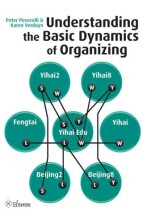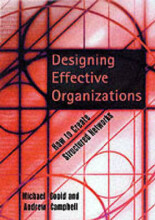Garvin: Change through persuasion
9 important questions on Garvin: Change through persuasion
According to Garvin leaders can make change happen only if they have a coherent strategy for persuasion. Explain this.
How can leaders accomplish sustained improvement? (Garvin)
Describe phase 1: setting the stage.
(Garvin)
2. Demonstrate why the new direction is the right one.
(f.e. MC used strong wake-up call, hands-on-deck mail, contact newspapers: make sure staff can't claim ignorance).
- Higher grades + faster learning
- Never study anything twice
- 100% sure, 100% understanding
Describe phase 2: Creating the frame (Garvin)
2. Gather feedback, announce final plan
(f.e. help employees interpret proposals for change, send draft of plan, explanation, respond: this way convincing employees that this plan belonged to them and create an ongoing communication platform)
Describe phase 3: managing the mood (Garvin)
(f.e. pay attention to employees' emotions, preserve a receptive climate for change, give time to grieve and recover, make people feel cared and supported, ensure the turnaround plan proceeded quick, acknowledge feelings of depression, emphasize with employees, keep employees focused on the continuing work ahead, praise employees)
Describe phase 4: reinforcing good habits (Garvin)
(f.e. avoid backsliding into dysfunctional routines, help employees to maintain new behaviors, reinforce organizational value, use actions to backup words)
It's clear that the key to the Medical Center success is that Levy (change manager) understood the importance of making sure the cultural soil had been made ready before changing. Explain three levels he needed committed (Garvin)
2. Heart: emotional level, in receptive environments employees identify with the organization (values) and are committed to its continued existence.
3. Hands: workers in receptive environments have also psychical hands-on experience with the new behavior expected of them.
What is the main message of Garvin? To create a receptive environment...
Dysfunctional routines, by contrast, are barriers to action and change. Which six ways are there to stop change?
2. The dog and pony show must go on (ends and means, form and content are confused: how you present becomes more important than what you present)
3. The grass is always greener (to avoid facing challenges, managers look at new products/services etc. when this happens too often: problems will stay)
4. After the meeting ends, debate begins (resistance results in endless debates)
5. Ready, aim aim (no definitive course of action)
6. This too shall pass (ignore new initiatives, work around time)
The question on the page originate from the summary of the following study material:
- A unique study and practice tool
- Never study anything twice again
- Get the grades you hope for
- 100% sure, 100% understanding






























